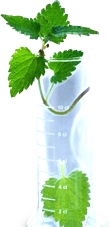



Author(s): Prasad Mamidi*, Kshama Gupta
Obsessive Compulsive Disorder (OCD) is a heterogeneous and multi dimensional disorder. Prevalence of OCD in general population is 2-3%. The main features of OCD are obsessions and compulsions. Obsessions are unwanted, intrusive, unavoidable, ego dystonic, frightening or violent thoughts and often impair quality of life. Compulsions are repetitive behaviors or mental acts such as washing, cleaning, checking, touching, counting, ordering, hoarding and rituals. The understanding of OCD in Ayurvedic terms is lacking. Obsessions are similar with ati, mithya or bhayanaka chintanam whereas compulsions resembles with cheshta vibhrama. The pathological features like, mano, buddhi, cheshta, sheela and achara vibhrama explained in unmada are also found in OCD. There is marked resemblance in between OCD and bhootonmada in terms of etiopathology, symptomatology, course & prognosis and the nature of disease. The Ayurvedic diagnosis of bhootonmada is suitable for OCD. Sangama graha resembles with the condition of Tourette’s syndrome comorbid with OCD.